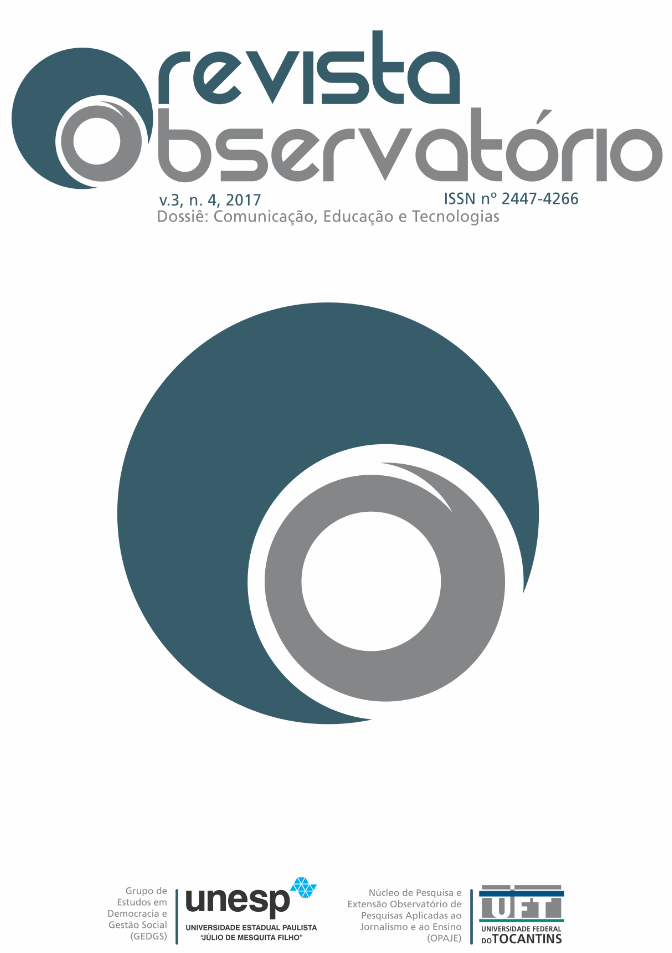POTENTIALITIES AND WEAKNESSES OF EACH ROBOT FOR KINDERGARTEN: 3 TO 6 YEARS
DOI:
https://doi.org/10.20873/uft.2447-4266.2017v3n4p302Keywords:
Robotics, Preschool, Robots for Preschool, Kids Media Lab ProjectAbstract
In the context of the research project Kids Media Lab - Technology and Programming Learning in Preschool Age, this text presents a study about robots for preschool children (ages from 3 to 6 years). The analysis of several robots was carried out on three focus group, at different times, with specialists from different areas (researchers, teachers of higher education, teachers of secondary education in the area of informatics, teachers of 1st and 2nd school cycle, kindergarten educators and teachers of special education), in order to observe the potentialities and weaknesses of each robot, thus indicating their suitability or not in the context of the kindergarten. This research allowed us to recognize relevant characteristics of the available robots in the international market and indicated as suitable for children from the age of three. From this robot validation process we recognize that there are dequate robots which should be considered in activities with children.
Downloads
References
BARBOUR, R. S.; KITZINGER, J. Developing Focus Group Research. London: SAGE Publications, 1999.
BERS, M. Blocks to Robots: Learning with Technology in the Early Childhood Classroom. NY: Teachers College Press, 2008.
BERS, M. U. Tangible kindergarten: Learning how to program robots in early childhood. In: SNEIDER, C. I. E. (Ed.). The Go-To Guide for Engineering Curricula PreK-5: Choosing and using the best instructional materials for your students. Thousand Oaks, CA: Corwin, 2014. p.133-145.
BERS, M. U.; HORN, M. S. Tangible Programming in Early Childhood: Revisiting Developmental Assumptions through New Technologies. In: (EDS), I. R. B. M. J. B. (Ed.). High-tech tots: Childhood in a digital world. Greenwich, CT: Information Age Publishing, 2010. p.49-70.
LOUREIRO, M. J.; MOREIRA, F. T. Conceitos básicos de programação em colaboração com o MI-GO. 5.ª edição do Teaching Day. Universidade de Aveiro 2016.
MIRANDA-PINTO, M. S.; OSÓRIO, A. J. Kids Media Lab: Tecnologias e a Aprendizagem da Programação em Idade Pré-escolar. In: RODRIGUES, M. D. R.;NISTAL, M. L., et al, XVII Simpósio Internacional de Informática Educativa, 2015, Setúbal, Portugal. Escola Superior de Educação do Instituto Politécnico de Setúbal. p.432-435.
PAPERT, S. The Conservation of Piaget: The Computer as Grist to the Constructivist Mill. In: FORMAN, G. e PUFALL, P. B. (Ed.). Constructivism in the Computer Age. Hillsdale, New Jersey: LAWRENCE ERLBAUM ASSOCIATES, 1988. ISBN 0-8058-0101-4.
ROSENBERG, M.; BERS, M. U. KinderLab Robotics. 2014. Disponível em: < http://kinderlabrobotics.com/kibo >.
VYGOTSKY, L. Pensamento e Linguagem. Lisboa: Relógio D´Água Editores, 2007.
YACOB, F.; LOGLIO, M., London, 2013. Disponível em: < https://www.primotoys.com/ >.
Downloads
Published
How to Cite
Issue
Section
License
[PT] Autores que publicam nesta revista concordam com os seguintes termos:
1. Autores mantém os direitos autorais e concedem à revista, sem pagamento, o direito de primeira publicação, com o trabalho simultaneamente licenciado sob a Creative Commons Attribution License (CC BY-NC 4.0), permitindo o compartilhamento do trabalho com reconhecimento da autoria do trabalho e publicação inicial nesta revista.
Leia todos os termos dos direitos autorais aqui.

